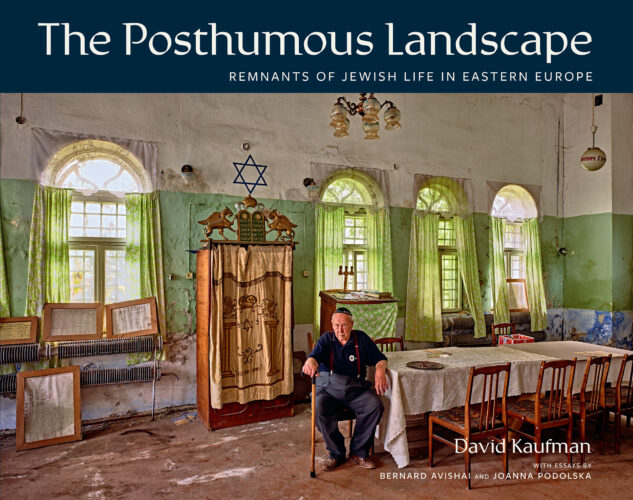In 1992, David Kaufman travelled to Poland for the first time, to produce a short documentary for the CBC program The Fifth Estate about hidden child survivors of the Holocaust. On that trip, he saw a Polish Jewish cemetery for the first time in a small town and was impressed by the quality of the memorial art and the calligraphy on the stone monuments. Kaufman returned to Poland twice in subsequent years, in 2003 and 2007, to make documentary films about the Warsaw Ghetto Uprising and the history of the Lodz Ghetto, and he was deeply moved by visits to the Jewish cemeteries in those cities. In 2007, he decided to embark on a long-term project to photograph Jewish cemeteries in Poland and other communal material culture that remained after the Second World War and the Soviet era.
Kaufman subsequently returned to Poland and travelled to other Eastern European destinations almost every year between 2007 and 2016. He eventually visited more than sixty locations in five countries, Poland, western Ukraine, and the Baltic States, making hundreds of photographs along the way. He photographed historic cemeteries, synagogues both restored and in ruins, former Jewish neighbourhoods and architecture, and some Holocaust sites, although the aim was to depict, as much as possible, what remained from Jewish life before the onslaught of the Hitler years.
The artistic results of those visits have been distilled into Kaufman’s first photography book, The Posthumous Landscape, a beautifully-printed large volume containing 163 images, to be released in October 2025. The photographs are supplemented by introductory essays from the political commentator Bernard Avishai and the Polish journalist and heritage activist Joanna Podolska, plus extensive background notes on the locations and sites portrayed in the volume.
FROM THE PUBLISHER, FIGURE 1 OF VANCOUVER:
“The Posthumous Landscape is more than an act of preserving memory. Kaufman brings his decades of documentary storytelling experience to bear, illuminating these places left behind. His photographs and accompanying texts describe a historic community that played a major role in the development of eastern European society and which left behind grand industrial complexes, urban neighbourhoods, architectural landmarks, beautiful synagogues, as well as vast cemeteries, and haunting memorials. The photographs also tell the stories of the afterlives of those places, many repurposed, some lovingly cared for by non-Jews who remember, and others slowly returning to the earth, but which are preserved in this book’s pages.
Some readers will find here names from their own family histories. All will discover a visual landscape that bears witness to the vitality and creativity of Eastern European Jewry before its destruction. The Posthumous Landscape is a tribute to a community that met a tragic end and a testament to how our internal landscapes are inextricably bound to the places of our past.”
EARLY REVIEWS of The Posthumous Landscape
“As a stone on a Jewish grave represents the permanence of memory that will not die, Kaufman’s sadly telling photographs of Jewish sites of memory in Eastern Europe–photographs of remnant stones, bricks and mortar–serve as visual testament to the existence of a vibrant Jewish world that once was but is no more. The Posthumous Landscape is a moving, human document, artfully delivered and devastatingly compelling in its impact.”
—Harold Troper, historian, professor emeritus, University of Toronto
“A luminous silence radiates from these pristine photographs. They record at this precise moment what can and cannot be recovered from a world destroyed with the disappearance of those who created it. An inspiring volume that invites the reader to follow in the photographer’s footsteps.”
—Barbara Kirshenblatt-Gimblett, Ronald S. Lauder Chief Curator, Core Exhibition at the POLIN Museum of the History of Polish Jews
“The Posthumous Landscape will be deeply meaningful to any person with a personal tie to, or interest in, the civilization that was created by Eastern European Jewry. As someone whose parents grew up in and survived the entire war in Poland/Ukraine, and who has researched issues related to the Holocaust, this book has spoken to me like no other.”
—Morton Weinfeld, Professor of Sociology, McGill University, co-author with John Sigal of Trauma and Rebirth: Intergenerational Effects of the Holocaust

